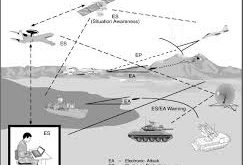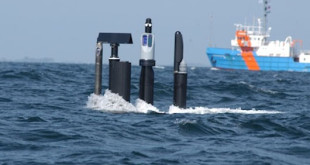Researchers are exploring the possibilities of combining the operations of distributed mobile systems with coherence at the radio frequency (RF) level, called coherent RF arrays, and the microwave and millimeter-wave technologies necessary to get there. The term “distributed” makes explicit that either the transmission or the reception function is divided …
Read More »Military Photonics
Photonics is the science of controlling the flow of light. The characteristics of the waves of light or individual photons that make up light can be used to explore the universe, cure diseases, and even solve crimes. It is a branch of optics that deals with the generation, transmission, modulation, …
Read More »Optical storage disc as Data storage technology is making combeback
There were 79 zettabytes of data generated worldwide in 2021. By 2025, more than 150 zettabytes of big data will need analysis. Dramatic increases in data storage capacities are urgently needed as they are being outpaced by exponential growth in data generation, driven by use of the internet, social media, …
Read More »Aircrafts employing Directed InfraRed CounterMeasure (DIRCM) to counter threat of Manpads, the shoulder-fired anti-aircraft missiles
The West in its continuous support to Ukraine has been supplying the besieged country with military aid in the form of arms as well as anti-aircraft and anti-tank defence systems. Joe Biden said the US will be sending an additional $800 million in military assistance to Ukraine. Among other weapons …
Read More »Terahertz Antennas
Terahertz (THz) represents the portion of the electromagnetic radiation between the microwave and the infrared region. It is within the frequency range of 0.1–10 THz, corresponding to wavelengths of radiation from 3000 to 30 µm. The advantages of the terahertz light are that they are non-invasive, intrinsically safe, and non-ionizing, …
Read More »Wi-Fi technologies migrating from Wi-Fi 5 to Wi-Fi 6
Bluetooth, developed in the late 1990s, is a technology designed to enable short-range wireless communication between electronic devices, such as between a laptop and a smartphone or between a computer and a television. Bluetooth works by using radio frequencies, rather than the infrared spectrum used by traditional remote controls. As …
Read More »Bluetooth technology powers everything from smartphones and wearables to smart home devices and headphones
Bluetooth, developed in the late 1990s, is a technology designed to enable short-range wireless communication between electronic devices, such as between a laptop and a smartphone or between a computer and a television. Bluetooth radio technology was developed by L. M. Ericsson in 1994. The standard is named after the …
Read More »Reduction of Magnetic Field Signature of Military Vehicles and Ships
As a vessel travels under or on the surface of water, it causes a detectable local disturbance in Earth’s magnetic field. This disturbance, referred to as the magnetic signature, makes the vessel vulnerable to enemy defense systems. In submarine warfare, adversaries use increasingly sophisticated magnetic sensor and signal processing equipment to …
Read More »Automotive Alternative Propulsion Market
Currently, most vehicles rely on internal combustion engines for locomotion; however, a significant shift toward partial and complete electrification is likely to emerge as an alternative propulsion system for vehicles. An internal combustion engine system is highly cost-effective and hence, its usage is higher than other propulsion systems. Being a …
Read More »Photonics Masts are critical subsystems of Submarine imaging, navigation, electronic warfare and communications system
A submarine is a naval platform that can stay underwater for an extended period to carry out missions, both offensive and defensive. It is a complex platform that includes multiple components. As radio waves cannot propagate in water, communication with submarines is difficult. To overcome this issue, submarines are being …
Read More » International Defense Security & Technology Your trusted Source for News, Research and Analysis
International Defense Security & Technology Your trusted Source for News, Research and Analysis



